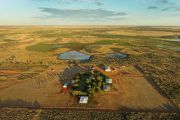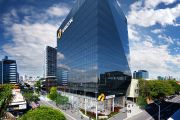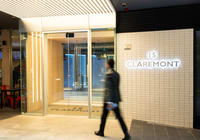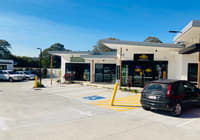
Don’t say Trump, but return to office will pick up: property bosses
Landlords Lendlease and Dexus say the push to get workers back to the office will pick up, after US President Donald Trump mandated five-day workplace attendance for employees of US federal government departments and agencies.
While they avoided commenting on Mr Trump’s executive order to eliminate work-from-home policies – which the newly inaugurated president followed with orders to sack diverse staff – heads of the two large property companies said the push to get staff back was accelerating.

“We’ve recently seen employers in Australia and the US move towards five-day office mandates, and that’s only going to increase as businesses assess their productivity and workplace culture,” Lendlease chief executive Tony Lombardo said.
Dexus chief executive Ross Du Vernet said the appetite of business to support large sections of their workforce working remotely had “consistently declined” over past years.
“The trends of centralisation and a focus on amenity and transport that were at play before the pandemic are accelerating,” Mr Du Vernet said. “Far from dead, CBDs are buzzing.”
The blunt and divisive US moves made some Australian property companies reluctant to discuss the matter at all on Wednesday. GPT, Stockland and the Property Council of Australia said they could not comment. Mirvac did not respond to a request for comment. Charter Hall chief executive David Harrison, a critic of working from home, did not respond to a request for comment.
Despite the clear risks for employers of mandating a return to the workplace, US employers, including Amazon, have started demanding staff return to the office five days a week. In Australia, companies such as CBA, the country’s largest bank, are increasing the pressure by threatening to cut bonuses and discipline workers if they flout return-to-office rules.
Turning cycle
But there are clear signs of life returning to the nation’s beleaguered CBD office markets, with tenants taking up space at the fastest rate in six years and room available for sublease – tenants letting out area they’ve taken to other occupiers – falling to the lowest level since 2020.
Offices across the Sydney, Melbourne, Brisbane, Perth, Adelaide and Canberra CBDs absorbed a net 163,500 square metres over 2024 – more than in any year since 2018 – new JLL research shows.
Separately, space available for sublease fell to 1.3 per cent of total stock in December from 2 per cent a year earlier and the lowest since June 2020, reflecting the strength of a jobs market that added 56,000 people ranks of the employed in December, JLL research head Andrew Ballantyne said.
“We view sublease availability as a barometer of business confidence,” Mr Ballantyne said.
“A reduction in sublease shows that organisations are expecting headcount growth and/or have greater confidence in their office space requirements.”
While net absorption of space increased, vacancy rates were little changed and at a national level, increased from 14.7 per cent in December 2023 to 15.2 per cent in December 2024.
This reflected the recent completion of new office stock, such as the 28-storey tower at 39 Martin Place, which fund manager Investa and Canadian investor Manulife acquired in 2021 for $800 million.
“We expect vacancy will start to decline over the next 36 months as there is limited new supply coming online,” Mr Ballantyne said.
The pipeline has slowed, said architect Amy Dowse, who designed 39 Martin Place for developer Macquarie.
“It’s definitely decreased,” said Ms Dowse, a director of Sydney-based firm Tzannes. “Pre-pandemic we did a lot more commercial work.”
Ms Dowse secured a 71 per cent increase in net lettable area at the 39 Martin Place tower by designing a bigger footprint on the 1879-square-metre site while protecting sunlight flows into neighbouring parks and not cutting views to public landmarks in Martin Place. This created an estimated extra $25 million in leasing revenue annually for the building, she said.
In Sydney, where the JLL figures showed the CBD’s net absorption of space last calendar year was 86,400 square metres, the most since 2015, the demand at present was for buildings with smaller floorplates, such as about 800 square metres, Ms Dowse said.
“That’s what we’re seeing more demand for – smaller boutique commercial spaces,” she said.
Vacancy was concentrating in lower-quality buildings with lower sustainability credentials and poorer amenities in worse locations, JLL’s Mr Ballantyne said.
“These assets will struggle to attract tenants unless they undertake major capital works.”
Owners of newer and better-quality buildings argue they are likely to draw tenants while weaker assets struggle.
“Our global office portfolio remains 95 per cent leased, so we know that businesses are looking for modern, connected and sustainable workplaces as they look to ramping up their team culture, attendance and engagement,” Lendlease’s Mr Lombardo said on Wednesday.
Dexus’ Mr Du Vernet agreed getting staff back into the office was necessary to boost productivity.
“With operating conditions challenging, many leaders are looking at how they improve productivity,” he said.
“For many businesses, their people and the magic that happens when they work together, is their competitive advantage.”











